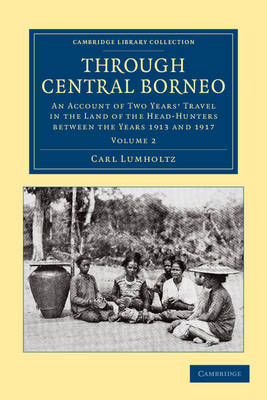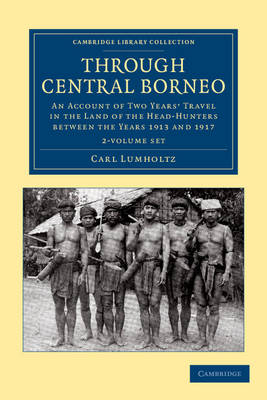Cambridge Library Collection - Travel and Exploration in Asia
1 primary work • 4 total works
Volume 1
The Norwegian explorer and ethnographer Carl Lumholtz (1851–1922) wrote the influential ethnographic studies Among Cannibals and Unknown Mexico (both reissued in this series) after his journeys through Australia and Mexico respectively. In 1913, Lumholtz went on his final expedition, which aimed to explore the large parts of Borneo unknown to the rest of the world. Interested by tales of head-hunting, he wanted to spend time with the indigenous people and conduct research. Originally published in 1920, this two-volume work is Lumholtz's account of his expedition. Many of the illustrations in the work are from photographs taken by the author, including pictures of members of the different tribes he stayed with. Volume 2 begins with the expedition's stay with the Penihing people. Throughout the volume, the folklore of the different tribes is discussed, and a chapter on head-hunting and its purposes is included.
The Norwegian explorer and ethnographer Carl Lumholtz (1851-1922) wrote the influential ethnographic studies Among Cannibals and Unknown Mexico (both reissued in this series) after his journeys through Australia and Mexico respectively. In 1913, Lumholtz went on his final expedition, which aimed to explore the large parts of Borneo unknown to the rest of the world. Interested by tales of head-hunting, he wanted to spend time with the indigenous people and conduct research. Originally published in 1920, this two-volume work is Lumholtz's account of his expedition. Many of the illustrations in the work are from photographs taken by the author, including pictures of members of the different tribes he stayed with. Volume 1 begins with an overview of Borneo and goes on to describe the expedition's journey into the jungle, while Volume 2 focuses on the way of life and beliefs of the Penihing people.
The Norwegian explorer and ethnographer Carl Lumholtz (1851–1922) wrote the influential ethnographic studies Among Cannibals and Unknown Mexico (both reissued in this series) after his journeys through Australia and Mexico respectively. In 1913, Lumholtz went on his final expedition, which aimed to explore the large parts of Borneo unknown to the rest of the world. Interested by tales of head-hunting, he wanted to spend time with the indigenous people and conduct research. Originally published in 1920, this two-volume work is Lumholtz's account of his expedition. Many of the illustrations in the work are from photographs taken by the author, including pictures of members of the different tribes he stayed with. Volume 2 begins with the expedition's stay with the Penihing people. Throughout the volume, the folklore of the different tribes is discussed, and a chapter on head-hunting and its purposes is included.
The Norwegian explorer and ethnographer Carl Lumholtz (1851–1922) wrote the influential ethnographic studies Among Cannibals and Unknown Mexico (both reissued in this series) after his journeys through Australia and Mexico respectively. In 1913, Lumholtz went on his final expedition, which aimed to explore the large parts of Borneo unknown to the rest of the world. Interested by tales of head-hunting, he wanted to spend time with the indigenous people and conduct research. Originally published in 1920, this two-volume work is Lumholtz's account of his expedition. Many of the illustrations in the work are from photographs taken by the author, including pictures of members of the different tribes he stayed with. Volume 1 begins with an overview of Borneo and goes on to describe the expedition's journey into the jungle, and the various ceremonies experienced during the journey, which provide interesting insights into tribal life and belief systems.


